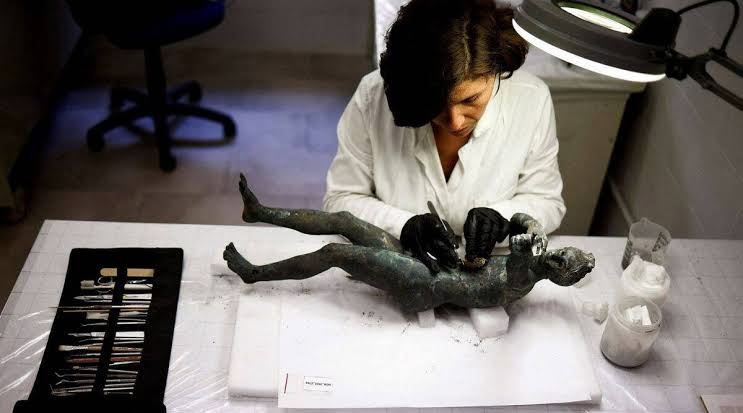Pratiksha Shome
Thanks to a senior neighbourhood garbageman, archaeologists last year unearthed more than 20 old Roman and Etruscan statues in Tuscany, close to a thermal treatment where specialists had spent years looking in vain for supposed nearby historic remains.
The 2000-year-old statues will now, after months of cleaning and restoration, go on display in Rome’s Quirinale Palace starting June 22, according to a report by Reuters on Friday. When the collection of ancient statues was originally rediscovered, experts dubbed it the “biggest collection of ancient bronze statues ever found in Italy” and predicted it will “rewrite history.”
About 100 miles from Rome, in the province of Siena, in the Tuscan village of San Casciano dei Bagni, were the statues discovered. Archaeologists have been looking for old ruins at the Renaissance-era public baths in the village since 2019 but have so far come up empty-handed.
Then, Stefano Petrini, a retired neighbourhood garbage man and amateur historian, recalled that years earlier, when standing in a garden owned by his friend, the local grocer, he had noticed remnants of ancient Roman columns. Only from that garden, which was across from where the archaeologists had been excavating, could Petrini see the columns.
The ancient statues, which appeared to be gifts to the gods in exchange for health, as well as sculptures of human parts including ears and feet, eggshells, pinecones, and medical instruments, were buried well beneath the muck.
The 35-inch statue of a frail youngster who appeared to have suffered from some kind of bone ailment and was inscribed with the name “Marcius Grabillo” was the highlight of this discovery, according to the article.
The discovery, according to Ada Salvi, an archaeologist representing the Tuscan provinces of Siena, Grosseto, and Arezzo’s culture ministry, “opens a window into how Romans and Etruscans experienced the nexus between health, religion, and spirituality.” There is a vast realm of meaning that needs to be comprehended and researched.
The San Casciano project’s director, Emanuele Mariotti, is confident that more will be discovered as the site is explored. He told Reuters, “We’ve only just removed the lid.
Souce: ARTnews





